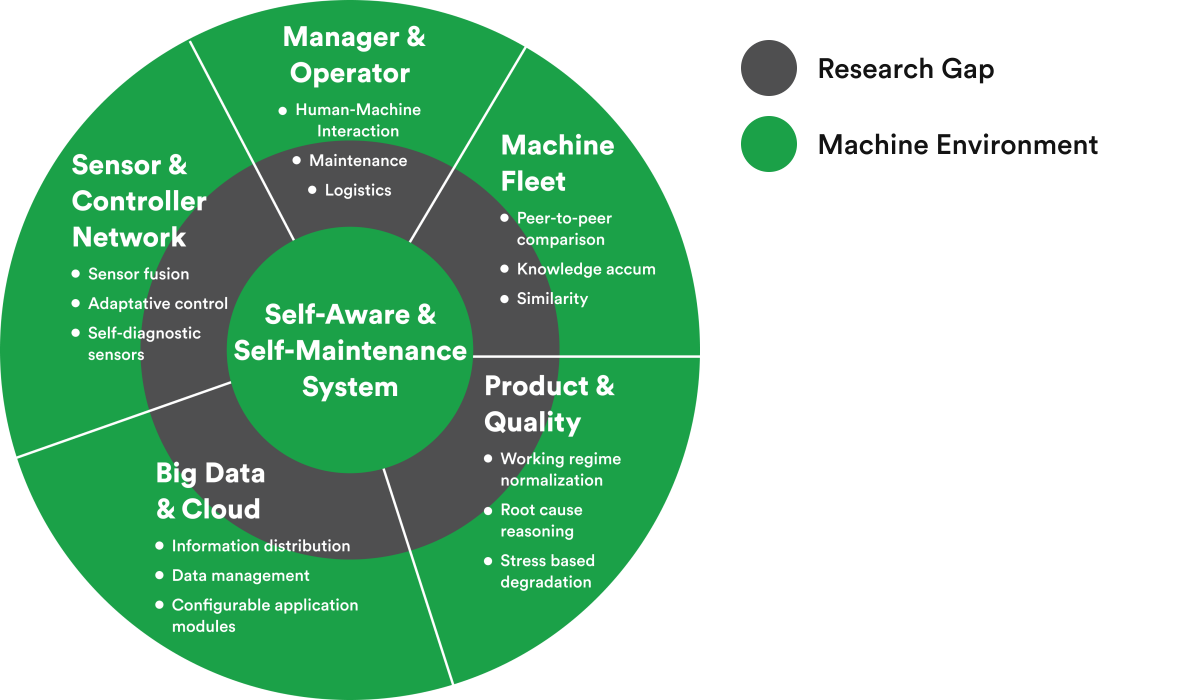
Privacy Concerns and Data Protection in IoT
Exploring the complex privacy issues emerging from the widespread adoption of IoT technologies and how to solve them.
The fourth industrial revolution, or Industry 4.0, is in progress today. Industry 4.0 is being paved by automation and new technologies powered by artificial intelligence (AI). Embedded systems development is a discipline that is at the center of Industry 4.0. It is shaping the new revolution and, by extension, the future.
In this article, we dive deep into the Embedded Systems landscape and explore how embedded software development will shape Industry 4.0 in the months to come.
Embedded systems fundamentally involve the marriage of software and hardware to deliver a specific service or function in real time. Embedded systems are diverse and have a range of characteristics. They can be used in numerous ways across industries. Examples of entities that can have embedded systems are industrial machinery, electronic devices, and automobiles.
When a physical device is connected to a computer network, it is referred to as an internet-of-Things (IoT) device. Embedded systems can be seen as a series of interconnected IoT devices. It is called an industrialized IoT architecture when used at an industrial scale.
On the outside, embedded systems may have vastly different kinds of touchpoints. Some of their touchpoints may have an elaborate user interface, and some may have no user interface at all. Embedded systems have three structural components – software, hardware, and, sometimes, an operating system. There are broadly four kinds of embedded systems.
These systems are fully autonomous and don’t rely on the support of a computer, external network, or processor to function. These systems have specific functions and are pretty common and reliable. Simple examples of standalone embedded systems include appliances like microwaves, refrigerators, and various household IoT devices.
As its name suggests, these systems are portable. Mobile embedded systems are prevalent and widely used because you can easily take them from place to place. Many standalone embedded systems are also considered to be mobile embedded systems. Examples include digital watches, fitness trackers, calculators, laptops, and tablets.
These systems can provide an immediate function or an output as soon as a user requires it. Examples of real-time embedded systems are seen all across the globe today in healthcare, military operations, media, and manufacturing, and that’s just to name a few. These systems are found in the healthcare sector in ECG machines, pacemakers, and ultrasounds.
These are systems that are connected to a more extensive network. They can exchange data, information, and other forms of output with other connected systems. In terms of adoption, this type of embedded system is becoming widespread, especially for large-scale industrial use. Examples include power grids, security systems, ATMs, and point of sale (POS) systems.

Machines in multi-dimensional environment (source: ResearchGate.net)
The fact that embedded systems will shape Industry 4.0 is not based on flimsy evidence. The statistics of the embedded systems market attest to their degree of importance and influence in the future.
The forecast for the embedded systems market sees a figure of $116.2 billion by 2025. This is at a compound annual growth rate of 6.1% between 2020 (where the market size was $86.5 billion) and 2025.
The Asia Pacific region is all set to lead the race for growth in the embedded systems market, but North America and Europe are not far behind. Industries that are becoming the biggest adopters of embedded systems are healthcare, communications, aerospace and defense, consumer electronics, and energy.
It is abundantly clear that embedded systems are the building blocks of the future. While the COVID-19 pandemic did cause significant disruptions in the embedded systems space, things around the world are settling down again. Embedded systems are back on track (and with a vengeance, as seen in the market statistics above) to shape Industry 4.0.
If they aren’t already doing so, embedded systems will transform manufacturing processes across global industries. Visualize a manufacturing chain, beginning with ideation and ending with various post-production activities. With embedded systems, this entire chain can be linked and automated. Each moving part would be in complete harmony with the other.
The benefits of this are pretty obvious. Embedded systems in manufacturing allow companies to grow faster and build a significant competitive advantage gap. If an industrial internet-of-things architecture is designed well, it can be a game-changer for companies. It would allow for streamlined processes, scalability at lower costs, and heightened security.
Data is king. Companies with large volumes of valuable data and the most robust techniques of data management will be leaders of the future. As we’ve established, in an AI-driven future where automation is essential, systems need to be able to exchange large volumes of data with each other and essentially be their own / each other’s manager. Embedded systems allow that.
Consider any industry and a company within it. In the future, a company’s systems need to have an interconnected network that allows for data exchange to ensure seamless automation. This automation needs to be optimized to suit the complex needs of that particular company and its sector. Embedded systems allow for economic and automated data management.
We’ve established that data is a company’s most valuable asset. It’s only logical that the most valuable asset is given the most robust security. Embedded systems can potentially provide heightened security due to their interconnectedness. If network components were isolated and under attack, problems might be challenging to identify and remediate.
Embedded systems need security solutions for both their hardware and software. But just like the nature of the systems themselves, the security for those systems is also interconnected. This allows for thorough, centralized protection. This architecture’s centralized control allows for surveillance from a single vantage point.
Compliance is another major factor that companies need to consider. Regulations and compliance policies change regularly, so companies must keep up. Security options for embedded systems allow companies to be ready for any regulatory curveballs that might come their way. It’s easier to stay compliant in an interconnected system.
Companies are increasingly adopting environmentally friendly practices to prioritize and ensure sustainability. Reducing the size of their carbon footprint is a big deal, and rightly so. In a world with relentlessly bleak updates regarding the environment, embedded systems are a ray of hope.
Process optimization is one of the great byproducts of automation that embedded systems provide. You will only use the exact quantity of resources required. There will be no waste of precious resources, which includes everything from electricity to physical materials for manufacturing.
All the futuristic and hypothetical glory of an AI-driven Industry 4.0 will be nothing but fiction if fundamental environmental challenges are not addressed as a top priority. Embedded systems offer the best of both worlds, where companies can pave the future of Industry 4.0 with greener systems and industries.
It is a utopian and highly improbable idea that a single kind of embedded system can be used for different companies, purposes, and industries. It is not a one-size-fits-all solution. However, rather than seeing that as a drawback, companies must view it as a significant advantage of employing an embedded systems architecture. The flexibility is unparalleled.
Embedded systems offer great flexibility and customization options. It can be designed to suit the exact needs of companies and specific projects. What we haven’t dipped into in this article are the hundreds of hardware and software options that embedded systems are built upon. These include ever-evolving microprocessors, operating systems, and protocols.
The perfect embedded systems design involves picking the right variations of all those elements. It should abide by architectural logic as well as business logic. Due to the rapid innovations arising in this space, companies will be empowered with unlimited customization options to suit their needs.
We now know why embedded systems will shape Industry 4.0 – enhanced manufacturing, futuristic data management, security and compliance advantages, sustainability, and high degrees of flexibility and customization. That said, these advantages can quickly turn into challenges if companies adopt embedded systems without a strategy or expert support.
The irresponsible and highly risky thing for companies to do would be hastily transition to embedded systems architecture without proper planning. In today’s fiercely competitive world, a misstep could prove fatal. A significant financial setback or a competitive advantage gap lost could be irrecoverable.
Therefore, it is essential for companies, especially those who strive to be the pioneers of Industry 4.0, to find an expert partner like rinf.tech to mediate this profound change and help elevate them to the next level. The following case study is an excellent example of why employing the services of experts can be transformative.
rinf.tech worked on a project for a global automotive Tier 1 company to develop a PC software application that’s able to configure and control multiple devices built as a part of the “Sense Think Act” (STA) strategy. The project goal was to replace all existing tools with a single, configurable system for all current and future STA products.
In record time, our software engineering Team delivered that single configurable system. It had a unified, extensible architecture that supported multiple devices and could easily support new ones. Intimate collaboration and an agile methodology ensured that the client’s software application was developed and ready to deploy at breakneck speeds and the highest quality.

Exploring the complex privacy issues emerging from the widespread adoption of IoT technologies and how to solve them.

Exploring how IoT technologies can revolutionize our approach to safeguarding the planet and ensuring a sustainable future.

Delving into digital healthcare, showcasing the tangible benefits IoT brings to the healthcare sector, from enhancing patient engagement and monitoring to optimizing supply chains and operational workflows.